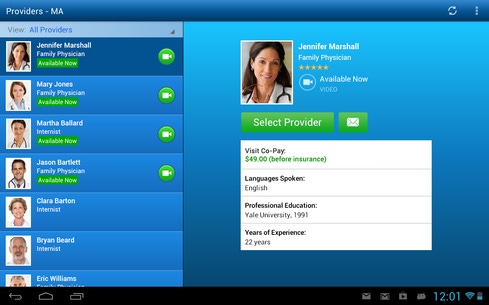By recommending that doctors be licensed in a patient's state, the American Medical Association places another hurdle in the path of telehealth adoption.


Engage Patients: 16 Creative Healthcare Strategies
Engage Patients: 16 Creative Healthcare Strategies (Click image for larger view and slideshow.)
In forcing telehealth usage to mirror the pattern of traditional healthcare, the American Medical Association limits the power and scope of this transformative capability. This week the AMA released a telemedicine policy that calls for in-person consultations in some cases and recommends that physicians providing a telehealth consult be licensed in the state where the patient receives treatment.
The organization said these in-person visits could occur via "real-time audio and video technology," which appears solely to negate the possibility of email, text, or instant-messaging consultations between patients and physicians. However, the AMA's recommendation that doctors should be licensed within a patient's state could stifle the many benefits telehealth delivers.
[When it comes to fitness, everyone needs a little motivation now and then. Consider these apps: 9 Mobile Apps To Get You Fit.]
The AMA wrote:
The Council believes that key tenets in the delivery of in-person services hold true for the delivery of telemedicine services. Notably, physicians and other health practitioners delivering telemedicine services must abide by state licensure laws and requirements as well as state medical practice laws including, for example, laws concerning consent involving minors, prescribing, reproductive rights, end-of-life, and scope. In addition, prior to the delivery of any telemedicine service, physicians need to verify that their medical liability insurance policy covers telemedicine services, including telemedicine services provided across state lines if applicable. It is essential that patients have access to the licensure and board certification qualifications of the health care practitioners who are providing the care in advance of their visit.
Few would argue practices or individual physicians should open themselves to liability by engaging in telehealth. But requiring doctors to become licensed across state lines will reduce the number of physicians willing and able to participate in this practice. The healthcare community must find ways to remove these hurdles, not create new roadblocks to telehealth adoption across state lines and healthcare organizations' walls.
Consider some ways telehealth is used today:
Both insured and uninsured patients turn to tools like American Well and TelaDoc for 24/7 access to care from home, work, or travel, thereby avoiding clinics and emergency rooms for non-emergency care.
The chronically ill regularly -- and remotely -- check in with caregivers, eliminating time-consuming and painful travel, and freeing up office visits for other patients.
Hospital caregivers consult with experts in their fields from around the country (or even world) on unusual cases.
Apps and add-on devices, such as InstaMD's Multi-Use Headset plus any stethoscope, expand the use of telehealth, since patients now can check their vitals and remotely share results with practices.
Healthcare is becoming more transparent. Patients, increasingly known as consumers, have more control over health. Premiums are increasing, and overall awareness, in an age of population health and patient engagement, is on the uptick.
In addition, the flexibility of telehealth empowers physicians who might otherwise have left the field to continue practicing medicine. Dr. Nicole Boxer, for example, shut down her general practice after starting a family. But working as a full-time telehealth physician for American Well allows her to treat patients from any location, as long as she has her lab coat and an Internet connection, she told InformationWeek. With doctor shortages -- especially among general practitioners -- predicted to reach 45,000 by 2020, telehealth provides physicians with a new pathway to treat patients, either through full-time or part-time employment with telehealth providers or as a complementary role to their full-time medical position.
Murkiness surrounds telehealth laws. In May, the Federation of State Medical Boards (FSMB) adopted guidelines and provided a roadmap for this approach. The American Telemedicine Association delivered its recommendations for TeleICU operations. With multiple organizations providing their well-meaning suggestions, states following their own rules, and insurers taking various strategies, telehealth adoption is hampered by fear, uncertainty, and doubt. Telehealth providers cannot expand into some regions due to uncertainty. Some physicians won't consult remotely because they're afraid of malpractice or disruption. There is also doubt about when clear-cut guidance will arrive.
The mantra of delivering better care more affordably guides everyone within the healthcare spectrum. Telehealth delivers on both needs -- but not if we force new, disruptive solutions into old patterns.
Download Healthcare IT In The Obamacare Era, the InformationWeek Healthcare digital issue on changes driven by regulation. Modern technology created the opportunity to restructure the healthcare industry around accountable care organizations, but ACOs also put new demands on IT.
About the Author(s)
You May Also Like







